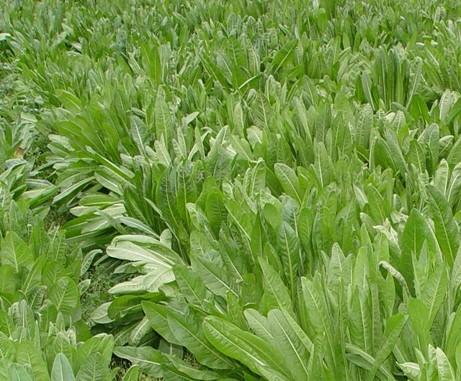| Origin and best harvesting period |
Chicory is a Uyghur customary medicine. It is distributed in Beijing, Hebei, Heilongjiang, Liaoning, Shanxi, Shaanxi, Xinjiang and Jiangxi. Among them, chicory root polysaccharide from Hebei has the highest OH scavenging rate and the strongest OH scavenging ability. In northern areas, chicory is harvested in late October and early November, when it has grown for 100-120 d and has formed full fleshy roots, on a rain-free day and before frost. When harvesting, use a shovel or a deep plough to dig up the whole fleshy root with the seedlings, taking care not to injure the roots and not to leave the broken roots in the soil. The dug up chicory seedlings with their roots are placed neatly in the field to dry for 2 to 3 d. Remove the root plants with shoots, trim the root plants, remove the old yellow leaves, leave 3 to 5 cm of leaf stalks at the base of the leaves and cut off the rest. |
